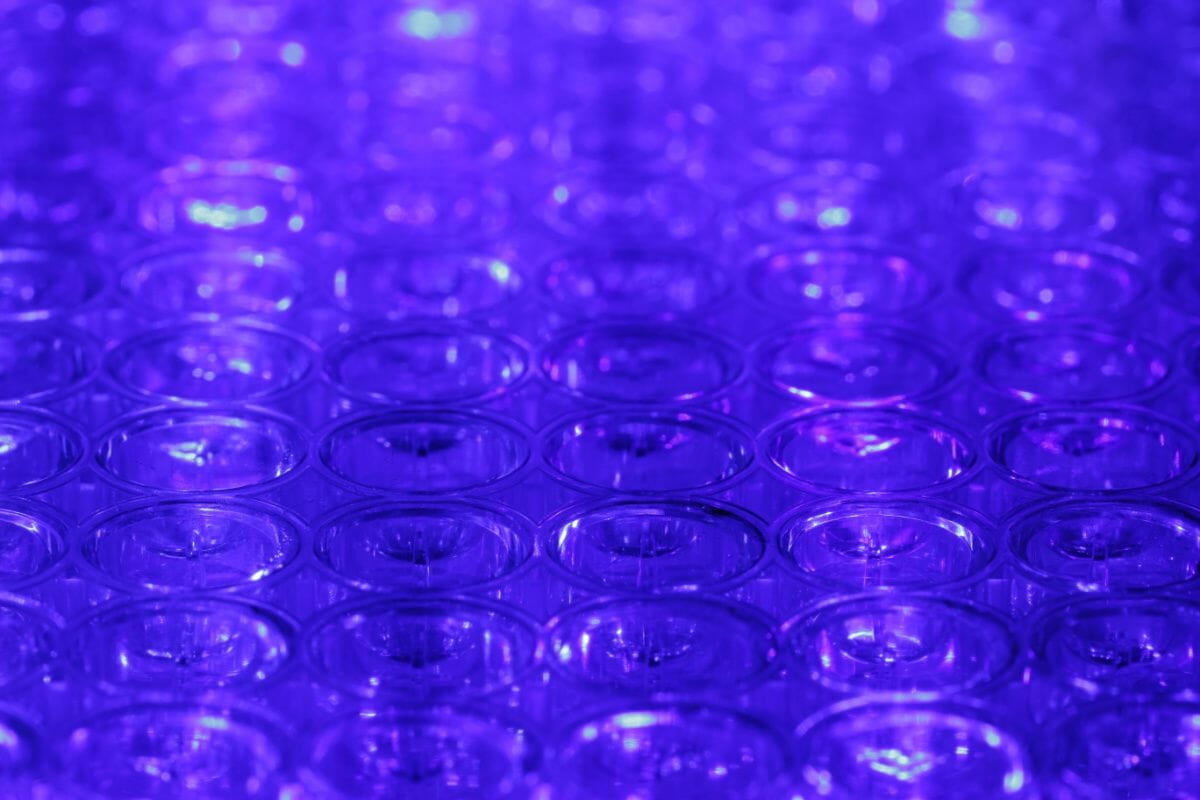
Thiol-ene reactions are well-known in chemistry, but their usefulness is restricted by limited shelf lives due to the thiolic affinity for adding across the ene, even in the absence of light. And yet such self-initiation is of great interest in industrial chemistry, allowing photopolymerisation to occur without the presence of additional initiators or thermal curing.
Synthesis of dendritic oligimer A
The dendritic oligomer A was prepared by reacting a difunctional thiol with an excess of trifunctional acrylate monomer in the presence of a base, such that the oligomers obtained have a clear excess of terminal acrylate functions that would render them useful for UV curing. The reaction was monitored by FT-IR until the disappearance of S-H (thiol) vibrations was observed, indicating complete thioether link formation. Excess of trifunctional acrylate monomer accounts for the generation of the subsequent dendritic oligomer, as any reaction proceeding with only difunctionalised compounds yields only linear oligomers, and furthermore guarantees additional reactive acrylate functions for curing. FT-IR analysis of the reaction was used to confirm that it proceeded by way of the Michael Addition reaction rather than through the Markovnikov route.
Characterisation of oligomer A
The definitive characterisation of the internal structures contained in oligomer A comes from the use of gel permeation chromatography (GPC) which is facilitated through the knowledge of the stoichiometric ratios and molecular weights of the different possible fragments that it could contain. GPC analysis revealed that the composition of oligomer A consists of (where f functionality count of terminal acrylates):
- 10% free unreacted triacrylate monomer,
- 10% f = 4 (tetrafunctional) product,
- 10% f = 6 (hexafunctional) product,
- 70% higher dendritic products in what appears to be a normal distribution.
The average molecular weight of A corresponds to a dendritic structure of approximate f equal to 18 or exactly five of the f = 6 structures linked together.
Thermal stability of oligomer A
Thermogravimetric analysis of oligomer A demonstrated its superior thermal stability characteristics when measured alongside those of polyurethane acrylates. The superior thermal stability is attributed to the clusters of thermally stable thioether bonds in the dendritic core of the oligomer. Results showed that 2% weight loss only on reaching temperatures of 304°C, whereas typical corresponding polyurethane acrylate counterparts are completely destroyed at temperatures of 180°C. The loss of viscosity of oligomer A after four days at 90°C was 1.7%.
Mechanical and physical properties of oligomer A
The tensile strength at break of oligomer A (27MPa) was found to be much higher than that of standard thiol-ene mixtures without acrylates which typically produce soft, low tensile strength, low elongation materials.
The elongation (5%) and hardness (80D) of oligomer A are similar to commercially available dendritic urethane acrylates, but it has the advantage of a substantially reduced viscosity. Oligomer A also has a glass transition temperature that is much lower than dendritics and acrylate monomers of higher functionality. This is a characteristic of standard thiol-ene mixtures which are known for their low glass temperatures.
Chemical resistance of oligomer A upon coating formulation
From a panel of seven test substances known for stain and chemical resistance testing, oligomer A was stained slightly by yellow mustard and gave some moderate discolouration when subjected to 31% aqueous hydrochloric acid. Otherwise, its gloss and integrity remained intact. Coating failure with oligomer A was reported to take place after 200 double rubs with MEK.
Conclusion in brief
The novel oligomer A was synthesised and has been demonstrated to show exceptional shelf life and thermal stability. Upon curing, oligomer A gives rise to a coating with relatively high tensile strength and hardness that is similar to high-viscosity dendritic urethane acrylates. Unusually, the thiol-ene nature of the oligomer retains a low glass transition temperature when compared with other highly functional dendritics and monomers of high terminal functionality. Additional strength originates from the thioether links contained within the dendritic core, and these are considered intrinsic to the unsurpassed chemical and solvent resistance of the oligomer, making it especially suitable for use in high-performance coatings.